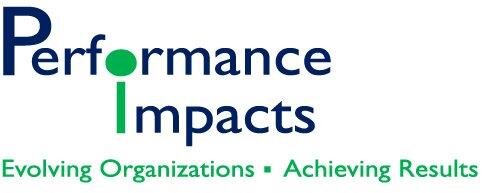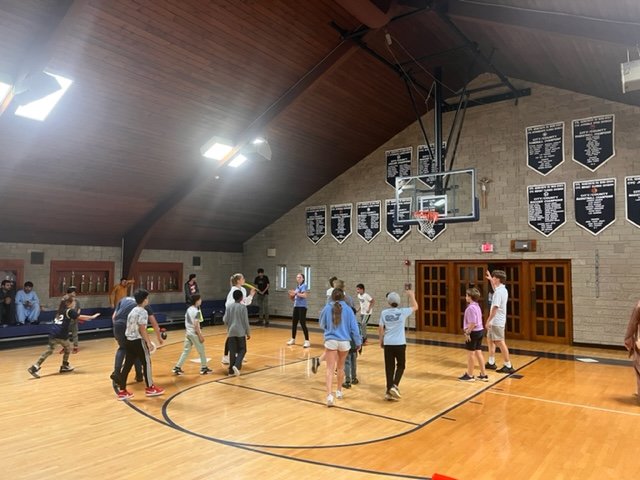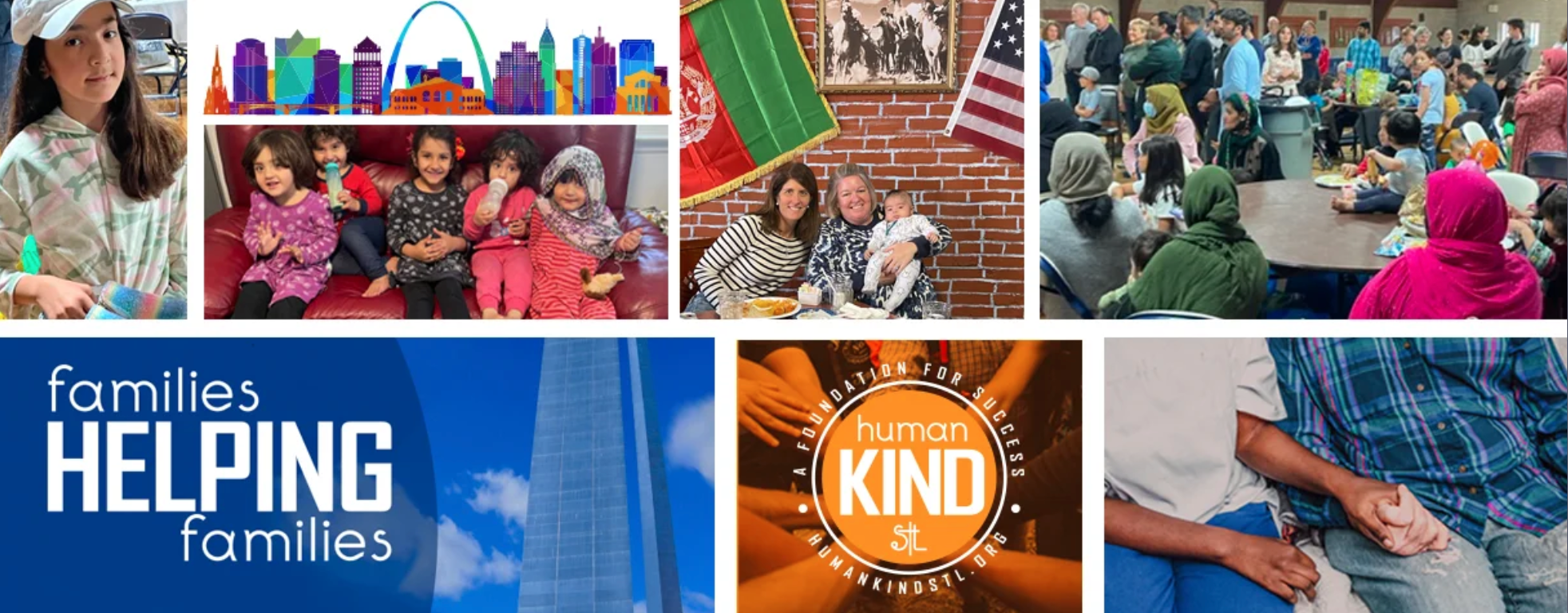HumandKIND STL
Making a difference in our community.
By Karrie Carlin, CEO of Performance Impacts
October 13, 2022
Recently, Performance Impacts organized an event for 200 new Afghan Refugees who arrived in St. Louis this last year. It was truly an honor to see the American and Afghan children playing together and having a fantastic time. They taught each other different games, basketball, and cricket, and had a common love for soccer.
Many other volunteers from HumanKindSTL partnered with us to make this a special and successful event. The purpose was for these new families to meet and connect and for us to help provide some additional support and friendship as they get settled in our community.
We donated fabric so they could make more of their traditional clothing, Dominos pizza (which was a new favorite for many) and everyone was able to share in tasting some incredible Afghan cuisine.
Donations of toys, shoes, and clothing were available for the children to take home with them. It was also so special for us to provide sports equipment for each child, so they all left with a new gift.
In thinking back to that special day, the memory that sticks the most was seeing the smiles on so many faces.
We welcome these wonderful families to our St. Louis community. Thank you to Mary Ann Jose and Kathy Miller for also donating new sports equipment for the kids.
If you want to get involved or donate, HumanKINDSTL is doing incredible work helping all of these families get acclimated.
Website: HumanKINDSTL
Creative Problem Solving
By Erica North, Talent Management Consultant with Performance Impacts
July 13, 2022
THERE HAS TO BE A BETTER WAY.
Imagine for a moment that it’s 1978 and you are vacuuming your home with your brand-new Hoover Junior. You are lugging around your heavy vacuum cleaner from room to room dissatisfied with its performance. The bag is filling way too fast and every time you change it dust goes flying into the air - creating more work in the process. It’s never ending. You think to yourself, “there has to be a better way”. That is the exact thought James Dyson had when he utilized cyclone technology in a way that had never been done before and created the world’s first bagless vacuum.
In our day-to-day lives, it can become comfortable to maintain status quo and continue operating in our tried-and-true ways. In our many years of working with leaders at all types of organizations, we hear frequently “because that’s how we’ve always done it”. However, as time goes on and organizations are expected to continuously innovate and evolve, stopping to consider if there is a better way is vital to ongoing success.
To help organizations do just that, we work with leaders to practice and implement creative problem-solving. Creative problem-solving is a method of solving problems when conventional thinking is unsuccessful. It promotes finding fresh perspectives and developing innovative solutions, so that you can formulate a plan to overcome obstacles and reach your goals.
Creative Problem-Solving requires you to separate your "divergent" and "convergent" thinking. Divergent thinking is the process of generating many potential solutions. Convergent thinking includes evaluating those options and selecting the best one. It is the separation of divergent and convergent thinking that is key to creativity.
So next time you are facing a challenge and need to find a better way, utilize the creative problem-solving framework below to maximize your results.
Growth Mindset
By Erica North, Talent Management Consultant with Performance Impacts
April 7, 2022
As consultants and leadership coaches, we work with all types of leaders. Generally, leaders have one of two mindsets. They believe that the skills and abilities of those on their team are inherent and no amount of coaching and development will significantly improve performance; these leaders have a fixed mindset. Or, they believe that with hard work and the right developmental opportunities, people can improve their skills and abilities; these leaders have a growth mindset.
The concept of mindset, specifically fixed and growth mindsets, has been studied for decades by world-renowned Stanford University psychologist, Carol Dweck. Through her research, Carol found that nearly all aspects of our life can be influenced by how we think about our skills and abilities. In her book, Mindset: The New Psychology of Success, Carol wrote, “After thirty years, my research has shown that the view you adopt for yourself profoundly affects the way you lead your life. It can determine whether you become the person you want to be and whether you accomplish the things you value.”
Leaders play an exciting and important role in their employees’ development and career success. Leaders who adopt a growth mindset will foster and increase their team’s potential and create a healthy culture of accountability that drives employee satisfaction and business growth. These leaders create an environment where their employees’ welcome challenges, work harder and persevere in the face of adversity. Ultimately, making them more effective learners and allowing them to contribute to the organization at a higher level. Employees who work for leaders with a growth mindset, where development and growth are highly valued, have a far greater sense of empowerment, ownership and an increased trust in their leader and organization. They are more committed to their organization and will perform above and beyond for it.
Carol Dweck, referring to creating a high-performance culture in an organization, wrote in her book, “Our best bet is not simply to hire the most talented managers we can find and turn them loose, but to look for managers who also embody a growth mindset: a zest for teaching and learning, an openness to giving and receiving feedback, and an ability to confront and surmount obstacles. It also means we need to train leaders, managers, and employees to believe in growth, in addition to training them in the specifics of effective communication and mentoring.” So how, as a leader, do you build a growth mindset and foster it within your team?
Here are five steps you can take starting today:
Find growth mindset role models. Start observing others and their mindsets. Is there anyone around you who has a growth mindset? If so, pay attention to how they view and approach key aspects of their life. Ask them for advice. You can also seek out experts in the field. Read Carol Dweck’s book. Check out Simon Sinek’s “Infinite Game” content.
Change your perspective on failure. Embrace the concept of failing forward. Michael Jordan once said, “I've missed more than 9,000 shots in my career. I've lost almost 300 games. Twenty-six times, I've been trusted to take the game winning shot and missed. I've failed over and over and over again in my life. And that is why I succeed.” Failing is not failure, it is a part of the learning process and a steppingstone to success. Also, don’t shy away from making mistakes in front of others. If you are growing, mistakes will happen. Normalizing mistakes and demonstrating growth from them will encourage others to take your lead. This is especially important for leaders.
Consider no as not yet: This simple shift in mindset changes the way your brain processes failure. This shift allows the possibility of success to exist. It makes success something that just hasn’t happened quite yet. When working through a challenging situation and struggling, tell yourself that you haven’t mastered the task at hand YET. If you persist, effort and time will lead to your success.
Stop seeking approval from others. When you seek the approval of others, you are pursuing the wrong purpose. You are pursuing being right as your goal, as opposed to learning and growing. Periodically, take a moment to consider whether you are working for approval or working for your own growth. Remind yourself that external validation is only a short-term win that quickly fades, leaving you on the hamster wheel of constantly seeking validation from others.
Focus on rewarding actions, not traits. Start recognizing when the people around you are DOING something smart, not just being smart. This is about focusing on and recognizing behaviors that lead to success. You can use this on yourself too. When you achieve success, take a minute to really reflect on all the hard work and smart decisions you made that led to the outcome.
Building and fostering a growth mindset isn’t easy. It takes time and practice to accomplish, but the rewards both personally and professionally are well worth it. Need help developing a growth mindset? The coaches at Performance Impacts work with leaders at all levels and from all organizations in this area and would love the opportunity to help you reach your goals as well.
Guide your team toward success
By Erica North, Talent Management Consultant with Performance Impacts
May 20, 2020
The true test of leadership is successfully steering an organization through a major crisis while maintaining the confidence and commitment of employees. Here are some ways that resilient leaders guide their team past fear and toward success.
HAVE A GOOD COMMUNICATION PLAN
Explain challenges and solutions. It is important that your employees have a shared understanding of the organization’s problems and the fixes that are needed. Address employee concerns and encourage everyone to focus on what they can control. If a furlough, pay cut or lay-off is required, be transparent about what is happening. Talk about what to expect when going through stages of transition, how work will be distributed and discuss the possibility of future actions.
HELP EMPLOYEES DEVELOP RESILIENCY
Another tactic that can help employees move forward during a crisis is offering lessons in resiliency. Stephen Covey’s “Circle of Control and Influence” is a useful tool to encourage your employees to be proactive and focus their energy on actions within their circle of control and influence. Individual coaching conversations are also extremely useful in building resiliency. These guided discussions should be focused on recent successes, challenges, actions taken, as well as what they have learned during the crisis that they can still apply when things get back to normal.
HOLD ACTIVITIES TO IMPROVE MORALE
Share the vision for the future and connect each employee to the organization’s goals. Offer career development, provide coaching, and encourage mentorship programs. Recognize successes. During cutbacks, helping employees feel valued strengthens morale. Share wins, success stories and recognize and thank employees for their contributions. And finally, don’t forget fun! Play, novelty, humor and laughter reduce tension and stress. Easy and inexpensive activities — manager-chef pancake breakfasts, afternoon surprise treats, potluck lunches, dress down days, pet days, amusing contests — can unite your team and generate creative energy.
June. 15th 2019 Downtown St. Louis. Blues Championship Parade http://blues.ice.nhl.com/club/gallery.htm
BLUES. LEADERSHIP. RESILIENCE. TEAMWORK. VICTORY.
By: Karrie Carlin, MA, PHR, SHRM-CP
July 17th, 2019
“He’s laying it on the line,” Joel Edmundson says (of the St. Louis Blues). “When we see our top player doing that, every other guy follows. It is the kind of inspired leadership that can make a guy run through a wall.” Leadership, teamwork, resilience, and persistence secured the St. Louis Blues a spot in the NHL Stanley Cup Finals and now officially the winners of the Stanley Cup. These traits not only create success on the ice rink, but in business and other aspects of our community as well. Research tells us that there’s a common thread amongst many CEO’s; they played sports. There is a great deal we can learn through sports that help in all aspects of life. Another skill we can all learn from sports, especially this Blues team, is teamwork.
Player Zach Sanford said, in reference to Game 3 against the Boston Bruins after their Game 4 win, "A tough loss like that, I think a lot of teams a lot of guys would have started throwing each other under the bus, blaming other people and doing this and that…with this group, it's all just boosting each other and having each other's back, and that showed tonight." Resilience is serving the Blues well, too. Blue’s Head Coach Craig Berube said of Ryan O’Reilly after a playoff game “Day in, day out, there’s not a guy who works harder than him…He’s always out there, even if practice is optional.” This type of resilience is fostered in sports and proves to be valuable when tackling tough problems in the business world.
One other concept we talk about in the talent management and team development world is the Stages of Team Development – teams go through Forming, Storming, Norming and Performing. Statistics tell us that only 17% of global teams ever reach the highest level of teamwork – Performing (Tuckman, 1965). This team is there. It is evident that there is trust, respect, an understanding of each other’s role on the team, leadership, perseverance, and many more attributes that have taken them from last in the NHL to the Stanley Cup Champions. Forbes research shows the top characteristics of highest performing teams are “clear vision, inspiring leaders, team cooperation, communication, and appreciation all around”. As Michael Jordan said, “talent wins games but teamwork wins championships.” This incredible team fought hard for this win. They clearly demonstrated how important teamwork was in order for them to achieve this tremendous accomplishment.
What can we all learn from them? How can we be better leaders in all aspects of our lives like this talented Blues team on the ice? How do we take our teams to Perform at the highest levels? A challenge for all of us on and off the ice.













